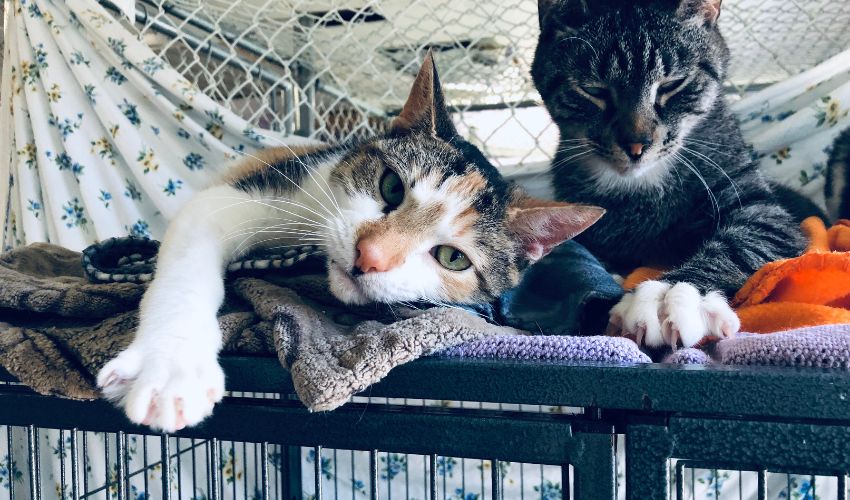What You Need To Know About Ferret Distemper
 If you have a pet ferret or planning to get one, then it’s important that you know the basics about ferret distemper. That way, you’ll know how to prevent your ferret from contracting the disease or help them recover if they become infected. It’s best to be prepared since distemper in ferrets proves to be highly fatal, sometimes even with proper treatment. In fact, distemper has a reported mortality rate of 100% in ferrets.
If you have a pet ferret or planning to get one, then it’s important that you know the basics about ferret distemper. That way, you’ll know how to prevent your ferret from contracting the disease or help them recover if they become infected. It’s best to be prepared since distemper in ferrets proves to be highly fatal, sometimes even with proper treatment. In fact, distemper has a reported mortality rate of 100% in ferrets.
The first thing you need to know about ferret distemper is that it’s caused by the same virus that causes distemper in dogs: the Canine Distemper Virus. That means, ferrets can contract the disease from dogs, as well as species of wildlife that can be affected by the virus, such as raccoons, squirrels, or skunks, and vice versa.
Signs And Symptoms
Signs and symptoms of distemper may vary from one ferret to another, but it typically starts with mild conjunctivitis, followed by yellow to green-colored discharge from one or both eyes. After a few days, ferrets may also come down with a high fever of 40 degrees Celsius or greater, lose their appetite, and become lethargic.
Visual signs of distemper in ferrets include the reddening and thickening of the skin around the chin, the lips, the anal area, and the inner part of the upper thigh. As the disease progresses, those areas will turn crusty, and the footpads will become thick and hard. For older ferrets, lesions around the chin and feet may also develop.
In younger ferrets, the virus worsens a lot faster, so you will most likely see signs of nervous system damage rather than skin issues. If you own a young ferret that may have contracted distemper, you should watch out for seizures or any behavioral changes, on top of high fever and loss of appetite.
Transmission


The Canine Distemper Virus can also stick to contaminated surfaces, objects, and equipment, such as floors, toys, food bowls, clothing, shoes, and even human hands. That means you may unknowingly bring the virus into your home if you’ve been in contact with infected material from the outside environment.
Diagnosis
To make a diagnosis, your veterinarian may use an antibody titer to determine if your ferret has been exposed to the Canine Distemper Virus. They may also use a diagnostic tool called the fluorescent antibody test, which involves taking cell samples from the eyelid lining, mucous membranes, or blood and examining them under a microscope. It uses a glow-in-the-dark substance that makes the virus glow when it attaches to the antibody. Unlike other tests, the fluorescent antibody test can differentiate between antibodies acquired from vaccination and actual infection. However, it’s also possible for the test to result in a false-positive reading.
Treatment


Moderately affected ferrets are more likely to survive distemper. They are typically put on antibiotics and treated with intravenous fluids, assisted feeding, and extensive medical care.
Prevention
Since there are no suitable treatments for ferret distemper yet, taking the necessary preventative steps is crucial. Here are some ways you can protect your ferret from the Canine Distemper Virus:
1. Vaccinate your ferret against distemper
Right now there is one existing government-approved distemper vaccine for ferrets called Purevax Ferret Distemper Vaccine. You can get your ferret vaccinated when they’re about 6 to 8 weeks, and they should receive a booster shot every 3 to 4 weeks until they reach 14 weeks of age.
2. Wash your hands before handling your ferret.
Because the Canine Distemper Virus can survive in the environment for several hours, you can touch a contaminated surface without you even knowing about it. So, make sure to wash your hands before handling your ferret, especially after going outside or coming into contact with other animals.
3. Immediately wash potentially contaminated clothes, shoes, and other materials.
The virus can also stick to materials such as clothes, shoes, and towels. If you go into places like pet stores, dog parks, and pet grooming salons, it’s best to clean your clothes and shoes immediately to prevent any disease-causing pathogens from coming into your home.
4. Keep your ferret indoors
Keeping your ferret indoors will prevent them from coming into contact with infected animals and contaminated surfaces or objects.
5. Don’t allow your ferret to come near sick animals
Whenever you go to the vet or any other place with potentially infected animals, be sure to keep your ferret away. Also, quarantine other pets in your home that may be infected with distemper or any other contagious disease.














